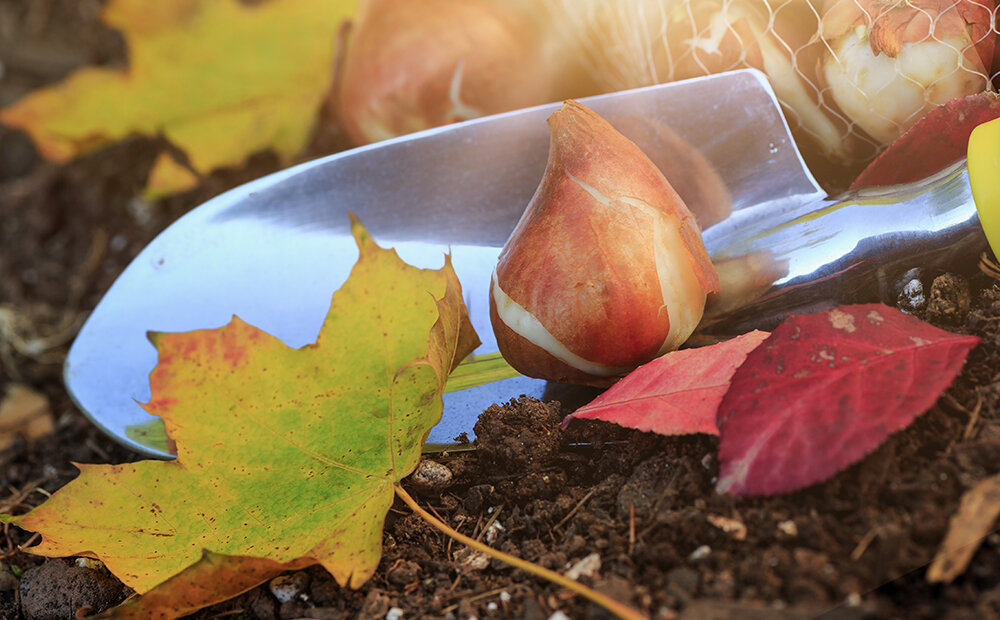IT'S TIME TO PLANT FALL BULBS: 10 SIMPLE TIPS
Planting bulbs in the fall is one of the easiest ways to bring springtime color to your garden with very little maintenance. Fall is the ideal time to plant spring-blooming bulbs because many of them need to be in a chilly environment through winter to kick off their growing season. If you're looking for flower bulbs to plant in fall, here are our tips for getting you started.
Plan Your Planting. Choose early, mid, and late-spring blooming varieties to stage in new blooms through the season; from snowdrops and crocuses before the snow is even gone, to daffodils and tulips, and finally alliums and daylilies towards the end of spring. We've got fall bulbs for sale at the garden center that will keep your garden in bloom all the way through to summer.
Know Your Zone and Climate. Indiana ranges from USDA zones 5b-6a. Indianapolis is mostly 5b, although if you have a very sheltered yard, you may have a bit of a microclimate that could let you get away with growing zone 6 bulbs.
Consider Bulb Care Requirements. If you're careful, and you're willing to baby them a bit (pile extra mulch on, dig a little deeper), your bulbs are more likely to survive the season and evade pests.
Time Your Planting. Bulbs should be in the ground around the first frost of the season, which is usually the middle of October, around the 15th.
Add a Little Bulb Food. Sprinkle equal parts bulb food and bone meal or blood meal to the planting hole before planting the bulb. The bulb food helps the bulb absorb nutrients to prepare for the coming season, and the bone or blood meal gives them a healthy dose of phosphorus and a little extra protection from scavengers. You may also choose to spread compost on top so your bulbs have plenty of nutrients for a strong start in spring.
Plant Your Bulbs Deep. A handy rule of thumb for planting bulbs is to bury them three times deeper than they are tall (so, 6 inches deep for a 2-inch tall bulb). Tulips should be four times deeper than they are tall (so 8 inches deep for a 2-inch bulb).
Plant Pointy Side Up. The pointy end is where green shoots emerge, so pointing them toward the sky will give your bulbs an easier time powering up through the soil in the spring.
Plant in Groups. One tulip by itself will look awfully lonely. Groups of 6-10 (a few inches apart) make for an attractive bunch, and some people swear that odd numbers are the most aesthetically appealing.
Water Thoroughly. After planting, soak the soil well so the bulbs can settle in, start to set their roots, and avoid drying up over winter.
Mulch for Protection. Add a generous layer of mulch over your newly planted bulbs to insulate them well. In the spring, you can pull some of the mulch off to expose the ground and warm it faster. Keep an eye on the forecast, though; if a hard freeze is predicted to happen overnight, make sure you cover them back up before nightfall.
OUR FAVORITE BULBS
If you're really ambitious with your planning, you can fill your garden with bulbs that will bloom from the last frost in spring until the first frost in fall. Here are a few of our favorites for each season. Many of these bulbs have several different variations within a species, so make sure to check the packaging for estimated bloom times.
Spring blooming bulbs include tulips, crocus, alliums, fritillaria, scilla, snowdrops, daffodils (also known as narcissus), some daylilies, and some irises.
Summer blooming bulbs (these should generally be planted in early spring) include lilies, summer hyacinth, saffron crocus, ranunculus, freesia, cyclamen, and amaryllis.
Fall blooming bulbs (these should also be planted in spring) include Sternbergia, fall blooming crocus, gladiolus (should be started indoors, approximately six weeks before planting outside), and colchicum.
If you'd like to fill your gardens with easy-care bulbs that deliver high-impact color and beauty, visit our garden center. We can help you pick out the options that will start next spring off on a high note, with minimal effort on your part. Easy gardening is the best gardening!





